Art & Exhibitions
A French Quarry Is Now the Site of a Stunning Immersive Experience
Inside the Carrières de Lumiéres's transportive exhibition featuring Van Gogh and Vermeer.
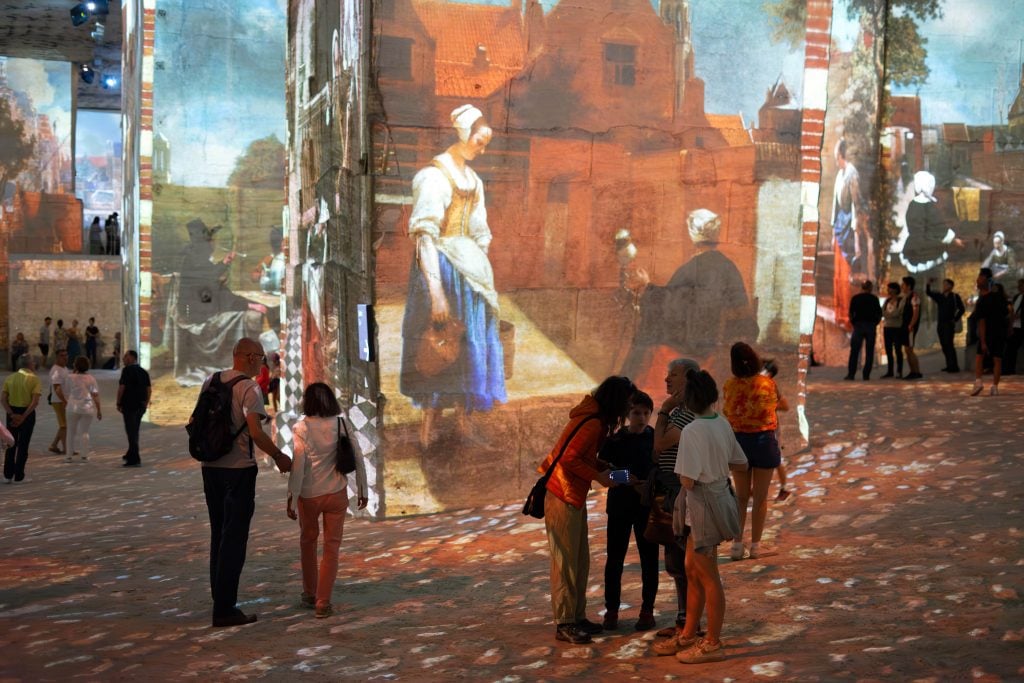
While on a recent bucket list vacation to France, I was eating at the restaurant La Petite Ferme in Aix-en-Provence when I asked my server if there were any must-see things I should experience while visiting the region. I was surprised that an immersive exhibition hall was on her list.
However, the Carrières de Lumiéres is far from a white cube. It is located at the foot of the village of Les Baux-de-Provence, and housed inside a former white limestone quarry formerly known as Les Grands Fonds in the Val d’Enfer.
The site was first quarried during the Roman Empire, and is believed to have provided stone for the construction of nearby towns such as Arles. In modern times, it reopened as a quarry in 1800 and closed in 1935 when demand for stone for construction fell after World War I, replaced by steel and concrete. In 1959, the quarry began its second life when Jean Cocteau decided to film The Testament of Orpheus on the site.
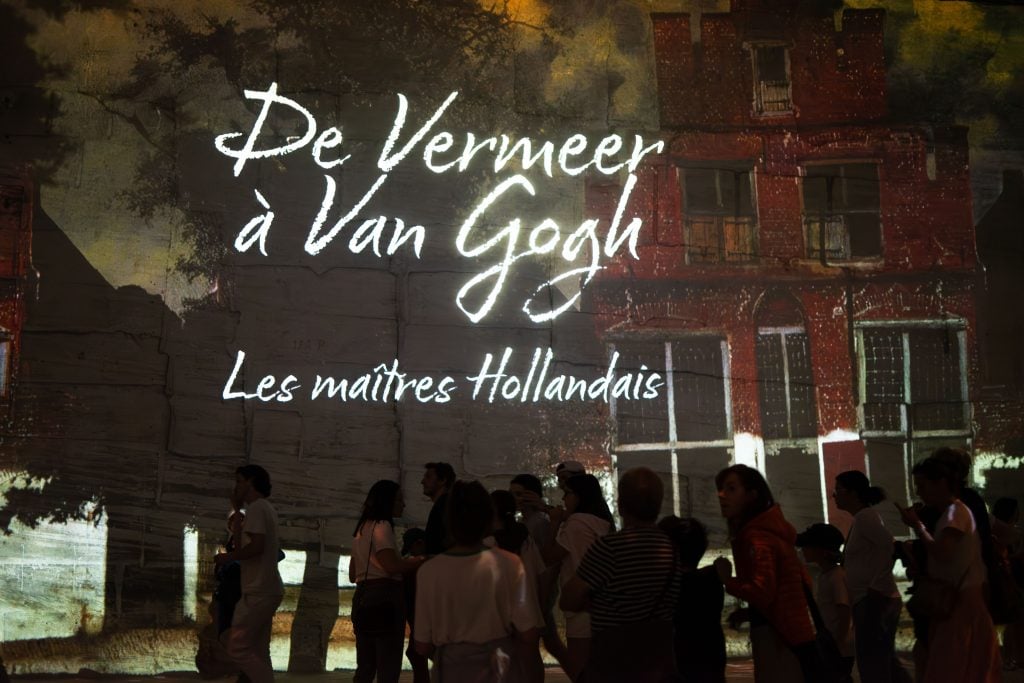
“From Vermeer to Van Gogh: The Dutch Masters” on view at the Carrières de Lumiéres. Photo: Adam Schrader.
In 2012, the town of Les Baux-de-Provence entered into a public-private partnership with Culturespaces for the management of the quarry. In its network, Culturespaces also operates the Hall des Lumiéres in New York, along with a number of other “des Lumiéres” immersive exhibit halls around the world.
I happened to stumble into the Carrières de Lumiéres, a standout venue, on the last day of its show, “From Vermeer to Van Gogh, the Dutch Masters,” and had spent the previous day at the nearby Saint-Paul-de-Mausole hospital in Saint-Rémy-de-Provence, where Vincent Van Gogh had made many of his masterpieces while voluntarily warded there.
I entered the venue shortly before Vermeer’s Girl With The Pearl Earring was projected onto the stone walls. It was breathtaking. First of all, the quarry is cavernous and feels much bigger than the Hall des Lumiéres, the only other venue in the network I am familiar with.
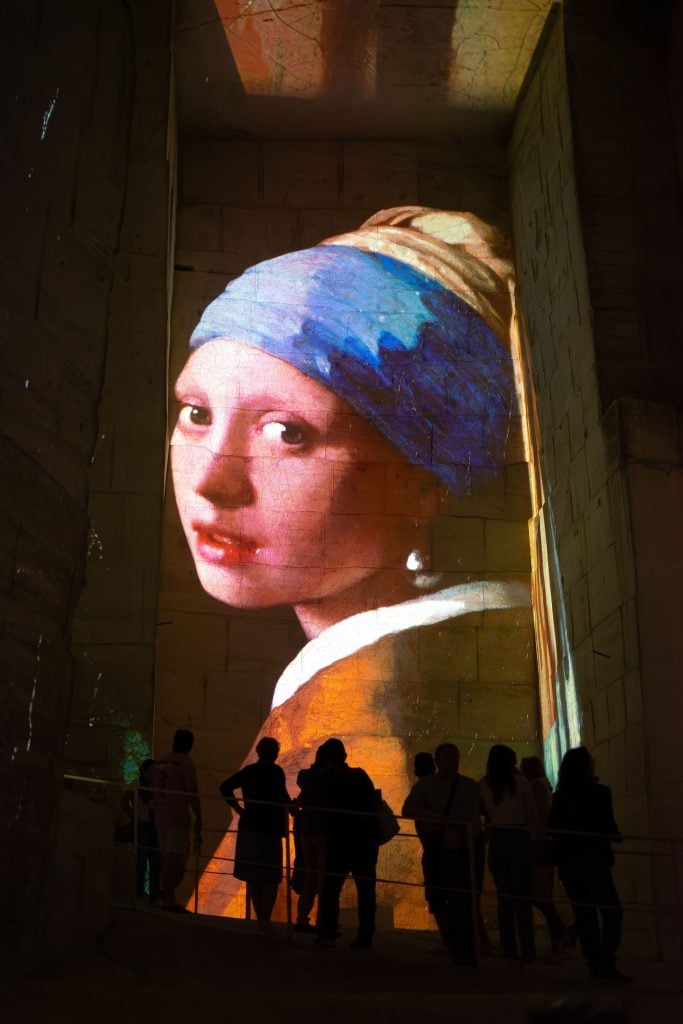
A massive-scale projection of Vermeer’s The Girl With The Pearl Earring at the Carrières de Lumiéres in France. Photo: Adam Schrader.
The walls are monumental, which makes the works feel even more so. And the texture of the stone eliminates one of the major problems I have had with immersive exhibitions in the past—the pixelation and other technical issues caused by scanning and photographing small works and blowing them up to a massive scale.
Walking around, I enjoyed hearing the crunch of the dirt floor underneath my feet and the musty smell of being underground—sensations that might feel eerily anemoiac for the passing of the sands of time during the venue’s next show, “Egyptian Pharaohs.”
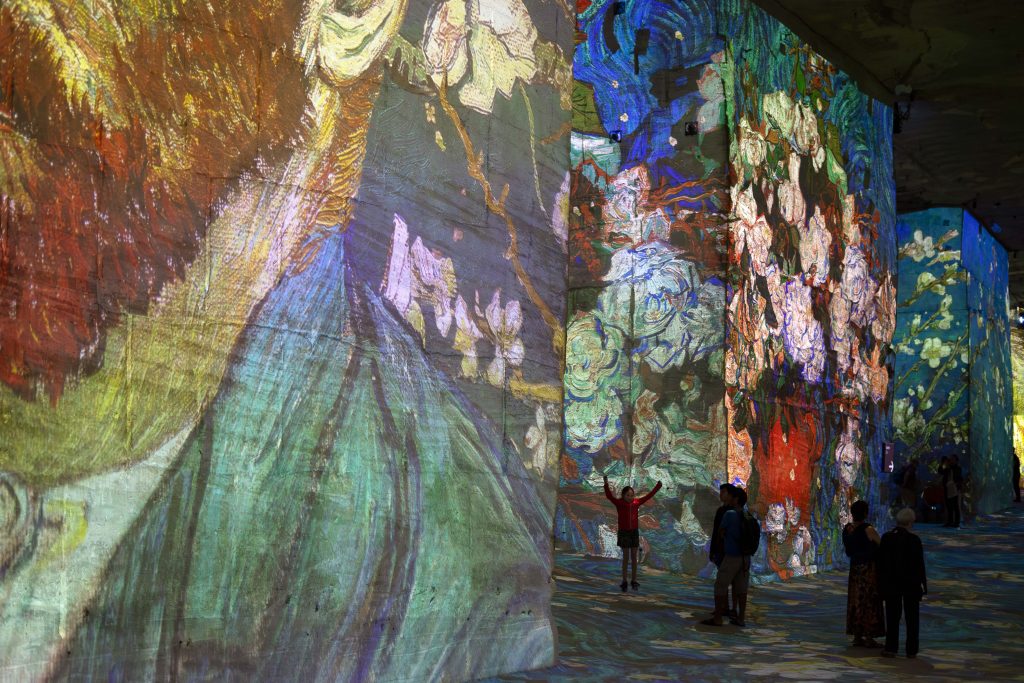
Inside “From Vermeer to Van Gogh: The Dutch Masters” at the Carrières de Lumiéres. Photo: Adam Schrader.
I felt compelled to write this article because, while sitting on the cold stone, the musical backdrop that had remained primarily classical shifted in the show’s final minutes to one of my favorite songs of all time—Pyramid Song from Radiohead’s “Amnesiac.” Nothing will ever explain how much a part of humanity I felt listening to it with a Van Gogh painting of the Seine blown up on the walls.
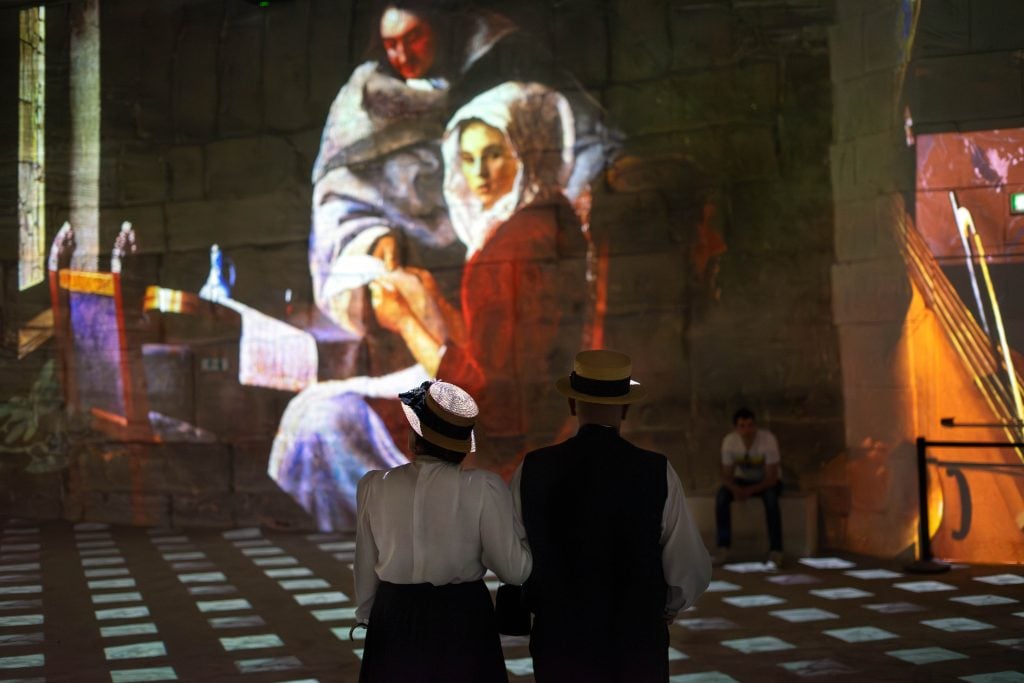
Inside “From Vermeer to Van Gogh: The Dutch Masters” at the Carrières de Lumiéres. Photo: Adam Schrader.
Eventually, the show reached its tear-jerking climax, when the projections shifted from his self-portraits and images of cypress trees to Starry Night (1889). When the show was over and credits began to roll, the quarry erupted into applause that echoed around the underground chamber.
“Egyptian Pharaohs” is now on view at the Carrières de Lumiéres, Route de Maillane, Les Baux-de-Provence, France.





